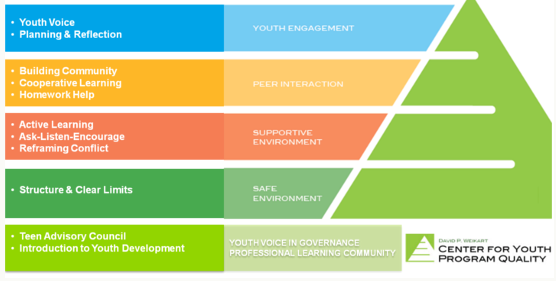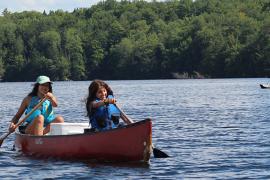Before I get started, I have a confession: I lied. I said in the title that in this post I was going to introduce you to a new friend, but that’s not entirely true. The Camp Program Quality Staff Checklist is not in fact new: it’s been available (for FREE!) on the ACA website for almost ten years. But it is likely new to some of you, and I’m going to discuss some new ways to use it, so the use of the word new is not entirely misleading. Now on to business.
Our focus today is on quality: what it is, and why the start to the 2018 summer season is the precise time you should be thinking about quality, whatever the pre-summer crisis you might be enjoying at the moment. I’ll share with you a tool — two, in fact — that you can use now, later, and then even later after that, and some tricks to using this tool in simple, easy-to-implement ways. We’ve talked about quality before; in fact, our Quality vs. Outcomes Smackdown is one of the most-read Research 360 blogs. So, if you have the appetite for a healthy debate, go read that blog and then come back here to think a little more about quality this summer.
Youth Program Quality is a way of understanding how we achieve our desired camper outcomes. A quality camp program consistently promotes positive youth outcomes through staff, program, policies, and camp climate. To do this, quality youth programs include the following elements:

Image retrieved from http://www.cypq.org/products_and_services/training/YWM
The kicker? Quality is determined by how each individual camper interacts with these elements, and the extent to which their camp experience supports their unique developmental needs. We call this point of service quality.
Whoa, wait a minute — every kid has their own criteria for quality?
Yes.
Uh, how can we possibly design unique camp experiences for every single kid we serve?
By focusing on quality. The great news here is that researchers have a pretty solid idea of what it takes to promote quality at the point of service — they’ve studied youth programs of all shapes and sizes and looked at the very, very specific things that happen in these programs that lead to positive developmental outcomes. So, while it is critical we always see our campers as individuals with unique experiences, values, and needs, we can use what we know from this research to predict what will happen if a camper experiences quality as they interact with staff, in their activities, and in their unstructured time at camp.
And now — yes, now — is the perfect time to think about quality. Here’s why: Quality starts with the staff who interact most frequently and meaningfully with your campers. Most camps are drowning in staff right now, either because they are showing up for staff training, or their newly hired staff are panicking (nor not panicking?) about paperwork, or the staff team is not yet hired and you are thinking how are we going to get the very best from the staff we have? If you want your campers to have a quality experience, then you absolutely must engage your staff right now in thinking about, planning for, and practicing what quality looks like in their job.
But I’ve already planned my entire training! Or we’re already done! Now what?
Enter your new (and free!) friend: The Camp Program Quality Staff Checklist. Built on the framework of the more expansive Camp Program Quality Assessment system, the CPQ Checklist was designed specifically to be super easy to use in staff training and on the fly throughout the summer.
Here is an example of just some of the behaviors the checklist will help you train for and observe with your staff:

As you can see, the Checklist is just that: a checklist of specific staff behaviors and activity characteristics proven by research to support positive youth development in camps. Simple behaviors like using a camper’s name, speaking at their level, and using get-to-know-you activities are all it takes to create personalized, memorable, and impactful experiences for your campers—experiences that are high quality because they are likely to promote the outcomes we want our campers to achieve.
I promised some practical ways you can use the Camp Program Quality Checklist now, later, and even later (like, in the fall). This is by no means an exhaustive list, just some starters to get you thinking about how you can use this tool in your camp, right now.
- Share the checklist with staff before the start of training, or at the very beginning. Ask them to share with a partner (or in a journal) what on the list will come most natural for them, and what might be challenging. Brainstorm in small groups ways to support one another with the items on the list they might struggle with.
- Assign chunks of the checklist to small groups and ask them to create a role-play scenario that includes all of the elements on that portion of the list. Have the audience use the checklist to identify when they see these items during the skit.
- Pair returning staff members with new staff members, and give them time and space for a one-on-one conversation. Ask the returning staff members to share their experience with the items on the list at camp, and ask them to offer tips and tricks to new staff members for promoting quality when interacting with campers.
- Break staff into small groups and have them use the checklist to conduct an audit the major chunks for a typical camp day — what does quality look like during morning activities? What does it look like at lunch? During pick-up? Ask the small groups to generate recommendations for improving quality in these chunks (make sure they include both structured activity time and informal time, like meals), as well as the barriers to quality throughout the day.
- Break staff into Quality Assessment teams (come up with a better title than that, please please please). Have these teams practice assessing actual activities using the checklist — check when something is observed, make notes when something does not happen — and then assign them time during the summer to walk around with the checklist and observe activities and informal time. Give them a clipboard so they can take good notes, and be sure to remind your entire staff team frequently and often that quality is about learning and every staff person can learn something from having their peers observe them.
- Here’s a crazy idea—ask campers! Use the items on the checklist as conversation starters with campers, or even in a survey. Did staff at this camp use your name today? Did you feel welcome when you joined a new activity for the first time? Ask staff to review what they learn from campers and compare that to what they think they are doing and what they could be doing to improve.
Wherever you are, it is always a good time to start thinking about quality, or return to quality if it’s something you are already familiar with. At its core, camp program quality is the best and most powerful tool we have to positively impact the youth we serve, so let the (free!) Camp Program Quality Checklist be your friend in your efforts to continuously improve. By the way, did I mention that it is free?
Laurie Browne, PhD, is the director of research at ACA. She specializes in ACA's Youth Outcomes Battery and supporting camps in their research and evaluation efforts. Prior to joining ACA, Laurie was an assistant professor in the Department of Recreation, Hospitality, and Parks Management at California State University-Chico. Laurie received her Ph.D. from the University of Utah, where she studied youth development and research methods.
Thanks to our research partner, Redwoods.
Additional thanks goes to our research supporter, Chaco.
The views and opinions expressed by contributors are their own and do not necessarily reflect the views of the American Camp Association or ACA employees.




